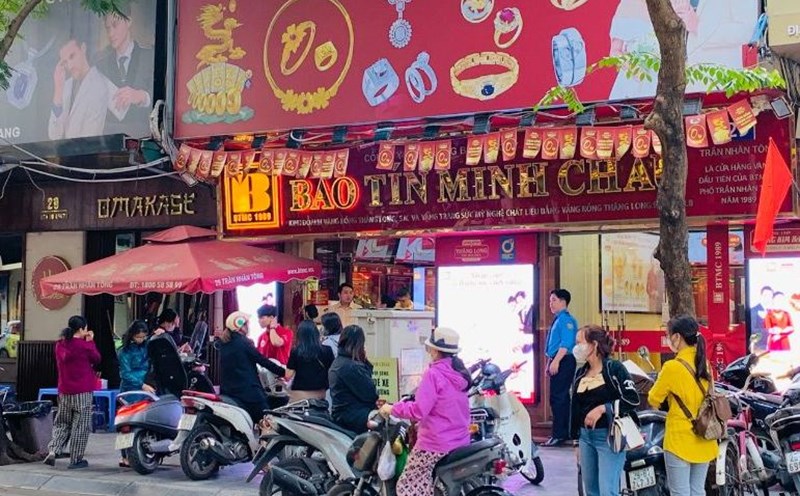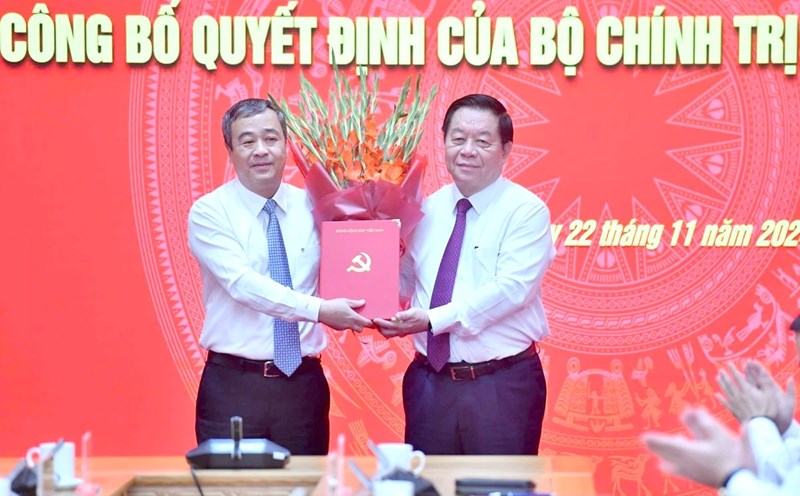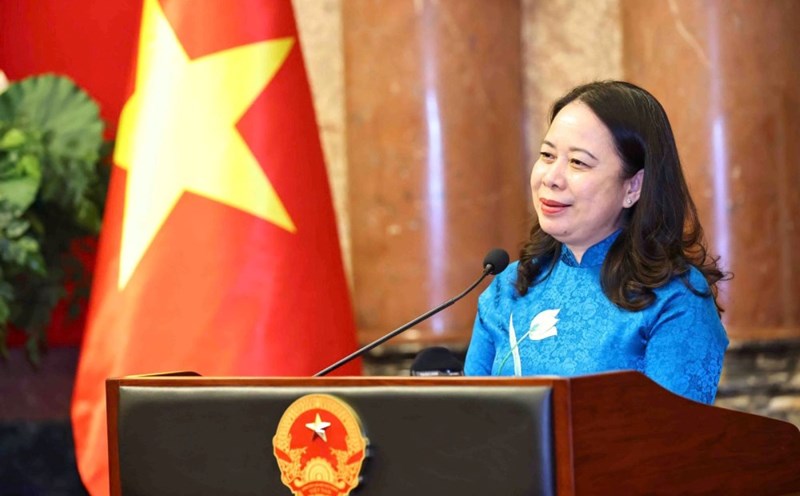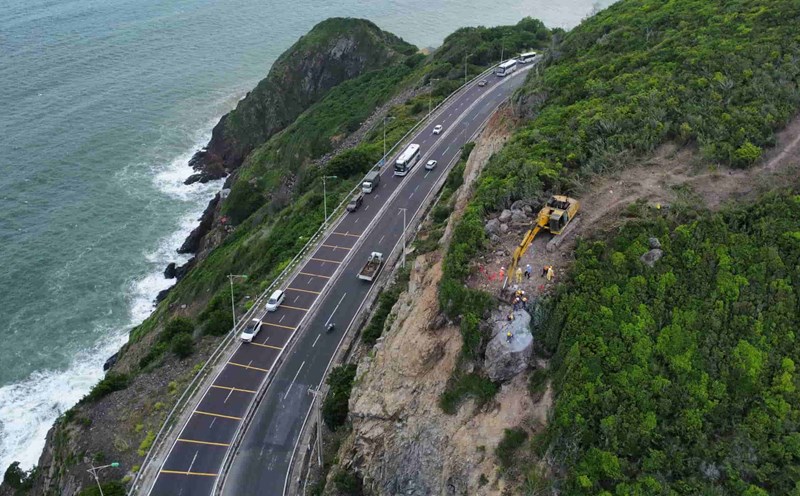Creating livelihoods for people to escape poverty
Mr. Pham Van Hanh, in Dak Song district, said that in recent years, all levels of the province and district have combined many different sources of capital to upgrade traffic infrastructure, schools, and village halls.
Currently, the most obvious change is that many roads connecting Dak Kual 5 village with the center of Dak N'Drung commune and Nam N'Jang commune have been invested in asphalt and concrete, creating convenience for people to travel.
"Since the roads became more convenient, the transportation of fertilizers, agricultural products... by people has become more efficient, and people's lives have become more prosperous than before" - Mr. Hanh excitedly said.
A few years ago, Mr. Dieu Tai's family in Tuy Duc district received support from Tuy Duc Border Guard Station (Dak Nong Province Border Guard) for a breeding cow.
According to Mr. Tai, on the day he received the cow, his family signed a commitment with Tuy Duc Border Guard Station and Dak Buk So Commune People's Committee stating that the cow would not be slaughtered or sold.
After more than 3 years of care, this breeding cow has given birth to 2 calves and is preparing to give birth to a new litter. Since the breeding cow gave birth, Mr. Tai's family has improved their lives. "The breeding cow giving birth and multiplying the herd will help the family confidently escape poverty" - Mr. Dieu Tai said.
Previously, Mr. Y Ghe’s family in Krong No district always faced economic difficulties due to lack of capital and land for production. The income from rice and corn was not much, so the family often went hungry during the lean season.
However, in recent years, thanks to the State's support programs, Mr. Y Ghe's family's life has gradually stabilized and escaped poverty.
“My family’s life has become more stable now. We have been supported with housing, land for production and technical training. Thanks to that, the efficiency of farming has been improved and life has become more stable,” said Mr. Y Ghe.
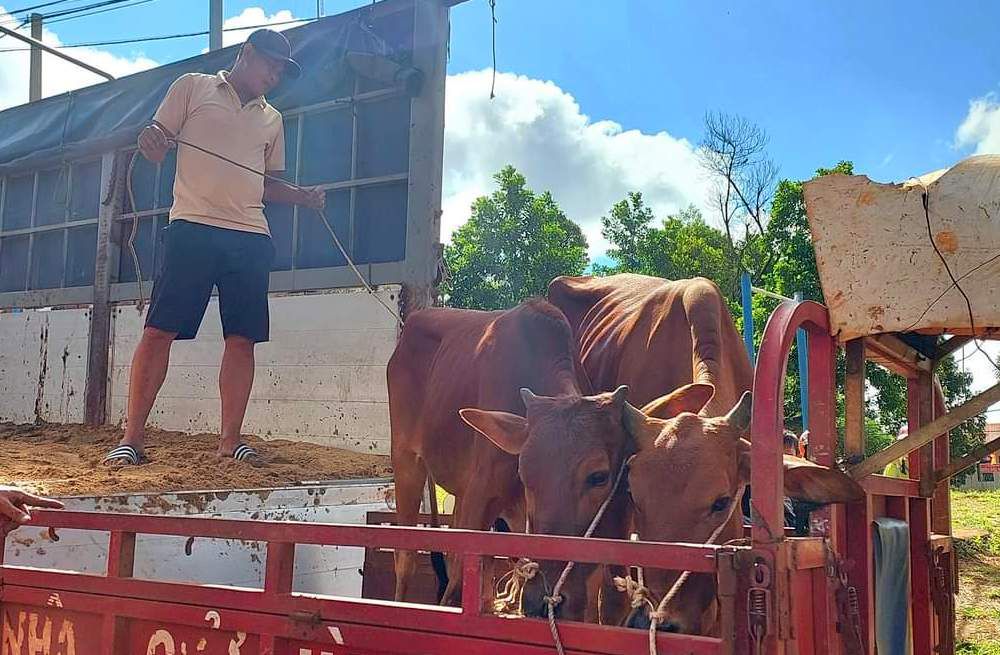
Effective in poverty reduction
Resolution of the 12th Provincial Party Congress, term 2020 - 2025, Dak Nong province sets the target of reducing overall poverty by 2%/year; reducing poverty among local ethnic minorities by 4%/year.
However, in 2021 and 2022, the Provincial People's Committee advised the Provincial Party Committee Standing Committee to accelerate and apply capital sources to strive to achieve the goal of reducing the overall poverty rate by 3% and the local ethnic minority households by 5%.
Specifically, the results of the review of the rate of poor and near-poor households at the end of 2021 showed that the whole province accounted for 11.19%. Of which, poor households of local ethnic minorities accounted for 32.81%, and poor households of ethnic minorities accounted for 27.98%.
By the end of 2022, the province's overall poverty rate will be 7.97% (down 3.22%). Of which, the poverty rate of local ethnic minority households will be 24.56% (down 8.25%) and the poverty rate of ethnic minority households will be 20.11% (down 7.87%).
According to the results of the investigation and review of poor households at the end of 2023, Dak Nong province still has 8,838 poor households, accounting for 5.18%. In 2024, this locality strives to continue to reduce the number of poor households by over 3,415, accounting for 3.15%.
Dak Nong province strives to reduce the number of poor households by 2% or more by the end of 2024, equivalent to a reduction of over 3,415 households. Of which, the total number of poor households in the province by the end of 2024 will be 5,423 households, accounting for 3.15%.
In addition, Dak Nong province also sets a target of 100% of poor and near-poor households lacking income criteria to receive support and create conditions for loans to develop production, provide vocational training, and create stable jobs to increase income.
100% of poor and near-poor households lacking basic social services will be partially supported to gradually improve and access services on employment, healthcare, education, housing, domestic water and sanitation, and access to information.


